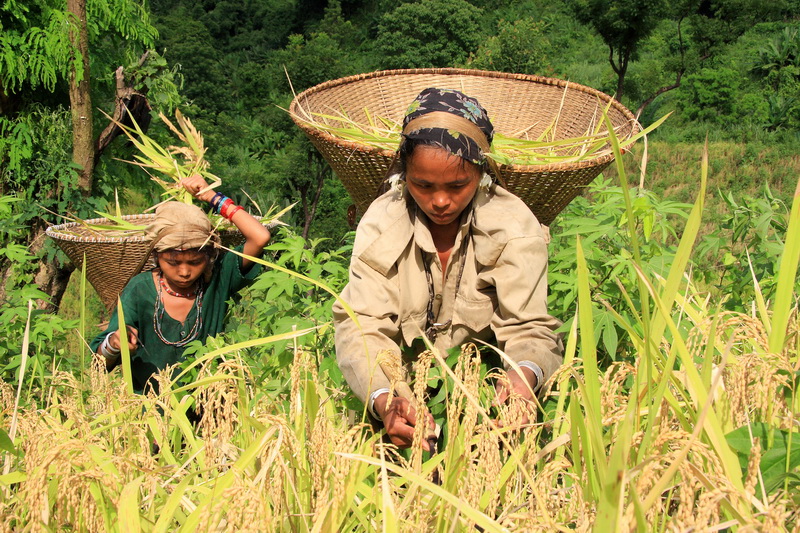‘Loss and Damage’ has become a fundamental issue for Parties to the United Nations Framework Convention on Climate Change (UNFCCC) and gained recognition as the third pillar of international climate policy, after mitigation and adaptation.
‘Loss and damage’ refers to negative phenomena of climate unpredictability and climate change that people have not been able to cope with or adapt to. This comprises of the incapability to respond effectively to climate stressors and the costs and hostile effects associated with the adaptation and mitigation. These costs and adverse effects can be both economic (momentary) and non-economic (non-momentary).
Dr. SaleemulHuq, director of the International Center for Climate Change and Development (ICCCAD) explains Loss & Damage as:
“Loss refers to things that are lost forever and cannot be brought back, such as human lives or species loss, while damages refer to things that are damaged, but can be repaired or restored, such as roads or embankments.”
Inadequacy of Adaptation due to Increasing Climate Risk
Bangladesh is one of the most vulnerable countries to climate change. It is frequently visited by natural catastrophes such as tropical cyclones, storm rushes, downpours, droughts, hurricanes etc.Superimposed on these disastrous properties, climate change and any consequent sea level rise are likely to add fuel to the fire. Not only have the natural calamities, health hazards also stepped into the most concern zone. The health of millions of people of Bangladesh is already being dented by climate change. Heat waves are distressing many more vulnerable people and global warming is enhancing the transmission of fatal diseases such as malaria, dengue fever, world’s most rapidly spreading diseases. Air pollution from fossil fuel burning is also producing millions of early deaths each year, while the destruction of harvests from extreme weather threatens hunger for millions of children. But the outlook is changing. Bangladesh has progressively developed the countrywide capacity to address climate change impacts.Climate change adaptation (CCA), disaster risk reduction (DRR), and to some extent mitigation measures are one firm priority on the political agenda.With the increasing frequency & intensity of climate-related hazards, it is now becoming clear that adaptation will not be sufficient to avoid loss and damage caused by the hostile effects of climate change.
A Range of Approaches to Address Loss and Damage
Regardless of adaptation and mitigation efforts, some climate effects are unavoidable and will ultimately conclude in residual loss and damage. Thus, managing loss and damage will need enhanced adaptation and mitigation efforts in order to reduce exposure, hazard, and vulnerability.
Approach 1: Risk Reduction
Risk reduction and adaptive capacity have facilitated reduce the number of deaths causing extreme events in Bangladesh in the last limited decades. Traditional risk reduction approaches for addressing the issues of loss and damage chiefly deal with reducing exposure, hazards, and vulnerability prior to the incidence of extreme events.
Generally, risk reduction approaches can be divided into structural and non‐structural measures. Structural risk reduction approaches are infrastructure‐based and comprise of the construction of polders (a low‐lying tract of land surrounded by an embankment or upraised bank), barrages and the solidification of the establishment of buildings – among other approaches. Non‐structural risk reduction measures, on the other hand, concentrate on the development of planning, changing behavior, and providing early warning. Traditionally, risk reduction efforts have often been conflated with adaptation policies.
Approach 2: Risk Retention
Risk retention efforts presently ongoing in Bangladesh mainly focus on actions targeted at resilience building such as social protection programs with the aim of safeguarding the ability of people and communities to grip the traumas, shocks, and impacts of loss and damage. Though these measures do not directly aim at addressing loss and damage from climate change impacts, they have nevertheless helped reduce the vulnerability of Bangladesh’s poorest to both current and future climate change impacts. Some examples of risk retention measures include emergency support, emergency food distribution, microfinance and asset transfers.
Approach 3: Risk Transfer
Risk transfer shifts financial threats from a discrete or organization to an insurer. This approach works fine in handling residual loss and damage that cannot be prevented through adaptation or mitigation efforts. ‘Microinsurance’ and ‘Crop Insurance’ are the prominent ones among the risk transfer approaches. But these insurance funds are not sufficient enough to meet the losses at large scale, especially where insurance is applied without satisfactory risk reduction, it can be a disincentive for adaptation as folks may rely on insurance to manage their hazards and are subsequently left exaggeratedly unprotected to impacts.
In order to develop and implement the right package of approaches to address loss and damage in Bangladesh, a number of steps will need to be taken which includes understanding the climate risks of loss & damage and who are the most vulnerable ones. Finally, funding, capacity, and technology at the national level must be accessible in order to implement approaches that effectively address and ideally lessen loss and damage and create a more irrepressible Bangladesh.
read Women Vulnerability Climate Change
writer
Shooha Tabil
Bangladesh University of Engineering & Technology (BUET)
